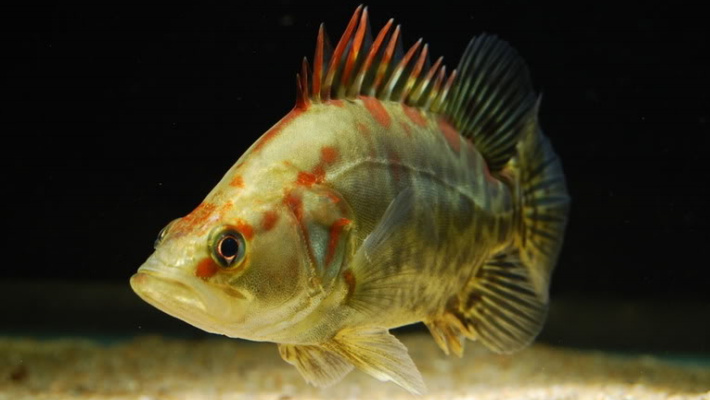|
As shown by
trade catalogs, many of national manufacturers use products of marine origin to
produce baits, groundbaits and attractants for freshwater fish. Marine
polychaetes, molluscs, cephalopods, crustaceans and fish are among these
products. These products are readily
available in the world markets and have relatively low cost. Generally, baits, groundbaits and
attractants with marine ingredients are usually positioned as instantaneous and
attractive for freshwater fish.
Really,
the results of field experiments described below show that statements of this
kind are
untrue. The first typical response both of freshwater and saltwater fish to
odors, alien for their environments, is aversion to these odors.
Brief aversion of fish to novel foods, with their
odors and taste, is called neophobia while
an additional persistent wariness to novel foods is called dietary conservatism
(DC) (Thomas et al., 2010). However, there are some part of adventurous
consumers (AC) which eat novel foods overcoming their neophobia (specifically,
in threespined stickleback, Gasterosteus
aculeatus). Generally (Thomas et al., 2010), the presence of AC and DC patterns in natural fish populations allows these populations to
develop adaptive foraging strategies in the changing environments.
Typical
freshwater feeding organisms
| Typical
saltwater feeding organisms
|
Oligochaeta
sludgeworms, Tubifex tubifex
| Polychaeta
ragworms, Nereis diversicolor
|
Oligochaeta
sludgeworms, Tubifex tubifex
| Oligochaeta
mudworms, Tubificoides benedii
| Mollusca
zebra mussel, Dreissena polymorpha
|
Mollusca
Black Sea mussel,
Mytilus galloprovincialis
|
Mollusca
pearl mussel, Unio pictorum
| Cephalopoda
long-finned squid, Loligo vulgaris
| Amphipoda
river sideswimmers, Gammarus pulex
|
Amphipoda
Caspian sideswimmers,
Pontogammarus maeoticus
|
Decapoda
narrow-clawd crayfish,
Astacus leptodactylus
| Decapoda
brown shrimp, Crangon crangon
|
Osteichthyes
weatherfish, Misgurnus anguillicaudatus (flesh)
| Osteichthyes
flathead mullet, Mugil cephalus
(flesh)
|
Note, weatherfish and mullet had distinct "swamp" and "seaweed" odors, respectively
We have
tested an attractiveness for freshwater fish odors of feeding organisms of
freshwater and saltwater origin. Compared feeding organisms are enumerated in
the Tab.1, freshwater feeding organisms were familiar for freshwater fish. Marine
organisms, except squids, were delivered in ice from Odesa region, the Black Sea, in Kyiv by car. Raw fresh frozen squids were purchased in an international commercial supplier
and identified to species. Selected feeding
organisms were crushed and stored in the refrigerator in conditions of deep
freezing. Before testing, they were thawed and mixed with the pure clay of grey color in proportion
10 gr food per 100 gr clay. Open thin wall cylindrical feeders (4 cm diameter,
1 cm height) made of stainless steel were used. Directly in the field, feeders
were filled with slide with the visually similar compared clay and food mixes.
Abundant
wild common roach, Rutilus rutilus,
(4-9 cm total length) were used as model fish.
Experiments were carried out on the sandy shallows of 20-30 cm depth in still water with good visibility of fish through the polarized glasses. Moving
along the shore, fish faced with the left or the
right wall of the guided corridor
set perpendicular to the shore, avoided the walls and entered the corridor. The walls of the corridor
(40 cm width) made of fine meshed net (30 cm height, 120 cm length) with
small floats and lead weights were installed with the help of four stainless
steel pins. Entering the corridor,
fish moved along the
walls and faced near the shore
with the two feeders placed at the distance of 25 cm
between their centers and attached to the bottom with the two stainless steel
pins. Approaching, fish selected
one of the two feeders with the compared
mixes and usually bitten clay, if the odor
and taste of the corresponding mix were attractive.
About 85% of roach preferred in all tests familiar odors over
unfamiliar ones and bitten clay with the matched taste (240 tests in total,
clay first touch, sign test, p < 0.01).
Note,
roach actively feed on blue mussels, Mytilus
edulis, in coastal eutrophicated areas of the Black
Sea (Lappalainen
et al., 2004). However, for roach in inland waters marine Mytilus are alien foods.
One test
session was carried out in the same manner with the Black
Sea red mullet, Mullus
barbatus ponticus (with the well developed chemosensory system: Andriyashev, 1944) in the natural sea conditions. As expected, mullets preferred familiar odors
of saltwater M. galloprovincialis and
Ostrea edulis over an unfamiliar odor
of freshwater U. pictorum (mussels
were crushed without shells and mixed with the pure clay).
Basic References
Andriyashev
A.P. 1944. The
methods of
food searching in the mullet (Mullus barbatus ponticus Essipov). Journal of General Biology 5, 193-195
Lappalainen A., Westerbom M., Vesala S. 2004.
Blue mussels (Mytilus edulis) in the diet of roach (Rutilus rutilus) in outer archipelago
areas of the western Gulf of Finland, Baltic Sea.
Hydrobiologia 514,
87-92
Thomas R.J., King T.A., Forshaw H.E., Marples N.M., Speed M.P., Cable J. 2010. The
response of fish to novel prey: evidence that dietary conservatism is not restricted to birds. Behavioral Ecology 21, 669-675
|








 SUBSCRIBE
SUBSCRIBE


